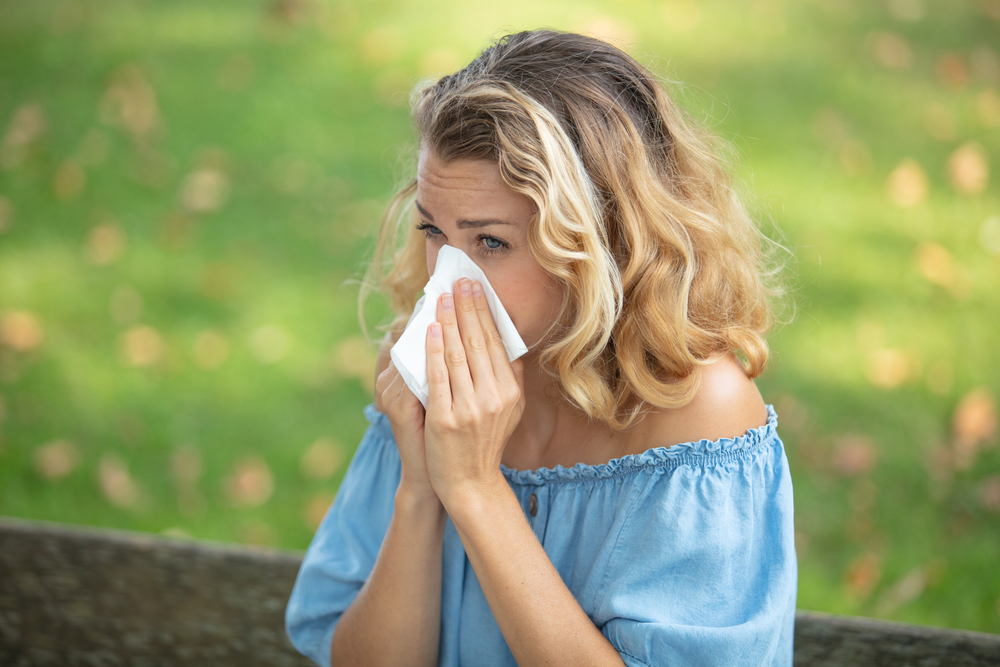What is allergic rhinitis?
Allergic rhinitis, also known as hay fever, is an allergic reaction. You have an allergy when your body overreacts to things that don’t cause problems for most people. These things are called allergens. Your body’s overreaction to the allergens is what causes symptoms.
There are 2 forms of allergic rhinitis:
- Seasonal (hay fever): Caused by an allergy to pollen and/or mold spores in the air. Pollen is the fine powder that comes from the stamen of flowering plants. It can be carried through the air and is easily inhaled. Symptoms are seasonal and usually occur in spring, late summer, and fall.
- Perennial: Caused by other allergens such as dust mites, pet hair or dander, or mold. Symptoms occur year-round.
Hay fever is the most common form of allergy. Symptoms of hay fever are seasonal. You will feel worse when the pollens that affect you are at their highest levels.
Symptoms of allergic rhinitis
Your symptoms can vary, depending on the severity of your allergies. Symptoms can include:
- Sneezing.
- Coughing.
- Itching (mostly eyes, nose, mouth, throat and skin).
- Runny nose.
- Stuffy nose.
- Headache.
- Pressure in the nose and cheeks.
- Ear fullness and popping.
- Sore throat.
- Watery, red, or swollen eyes.
- Dark circles under your eyes.
- Trouble smelling.
- Hives.
Allergic rhinitis can last several weeks, longer than a cold or the flu. It does not cause fever. The nasal discharge from hay fever is thin, watery, and clear. Nasal discharge from a cold or the flu tends to be thicker. Itching (mostly in the eyes, nose, mouth, throat, and skin) is common with hay fever but not with a cold or the flu. Sneezing is more prominent with hay fever. You may even have severe sneezeattacks.
What causes allergic rhinitis?
You have an allergy when your body overreacts to things that don’t cause problems for most people. These things are called allergens. If you have allergies, your body releases chemicals when you are exposed to an allergen. One type of chemical that your body releases is called histamine. Histamineis your body’s defense against the allergen. The release of histamine causes your symptoms.
Hay fever is an allergic reaction to pollen. Pollen comes from flowering trees, grass, and weeds. If you are allergic to pollen, you will notice your symptoms are worse on hot, dry days when wind carries the pollen. On rainy days, pollen often is washed to the ground, which means you are less likely to breathe it.
- Allergies that occur in the spring (late April and May) are often due to tree pollen.
- Allergies that occur in the summer (late May to mid-July) are often due to grass and weed pollen.
- Allergies that occur in the fall (late August to the first frost) are often due to ragweed.
Allergens that can cause perennial allergic rhinitis include:
- Mold. Mold is common where water tends to collect, such as shower curtains and damp basements. It can also be found in rotting logs, hay, and mulch. This allergy is usually worse during humid and rainy weather.
- Animal dander.Proteins found in the skin, saliva, and urine of furry pets such as cats and dogs are allergens. You can be exposed to dander when handling an animal or from house dust that contains dander.
- Dust. Many allergens, including dust mites, are in dust. Dust mites are tiny living creatures found in bedding, mattresses, carpeting, and upholstered furniture. They live on dead skin cells and other things found in house dust.
How is allergic rhinitis diagnosed?
If your symptoms interfere with your daily life, see your family doctor. Your doctor will ask you questions about your symptoms and medical history and perform a physical exam. Keeping a record of your symptoms over a period of time can help your doctor determine what triggers your allergies.
Your doctor may want to do an allergy skin test to help determine exactly what you are allergic to. During an allergy skin test, tiny amounts of allergens are applie

